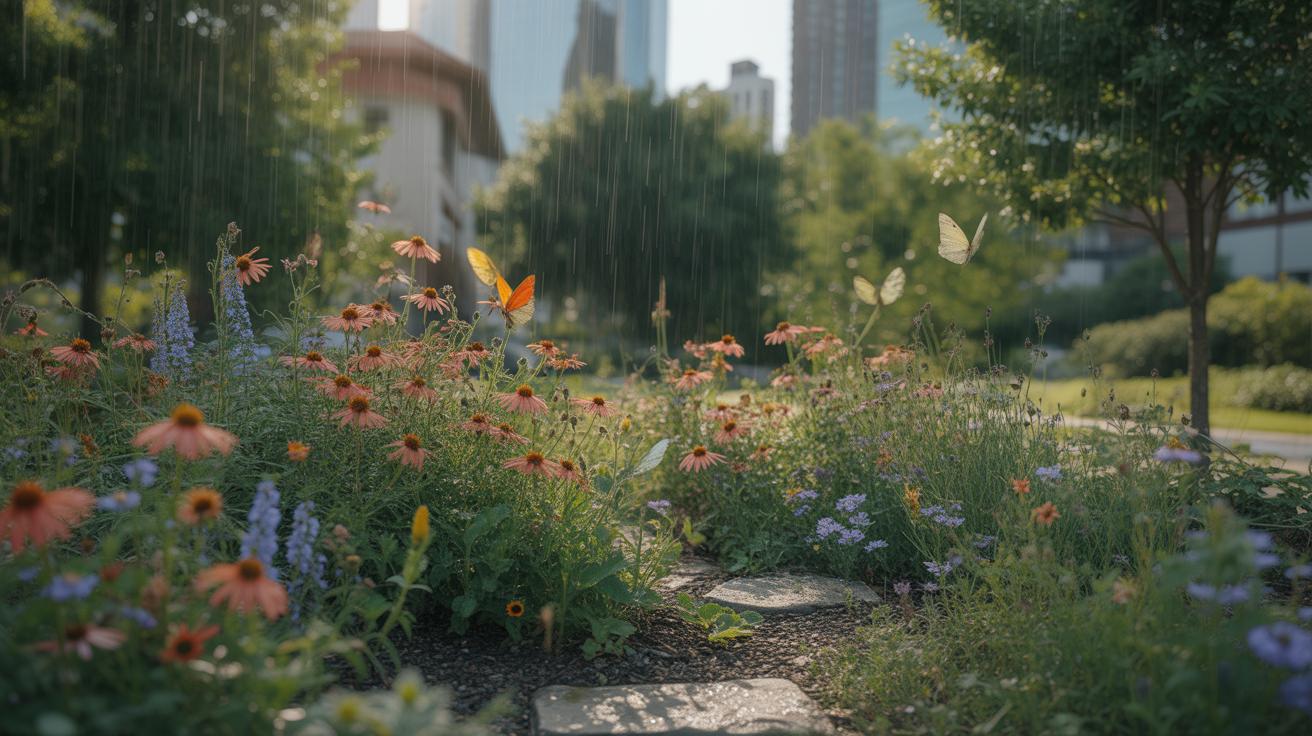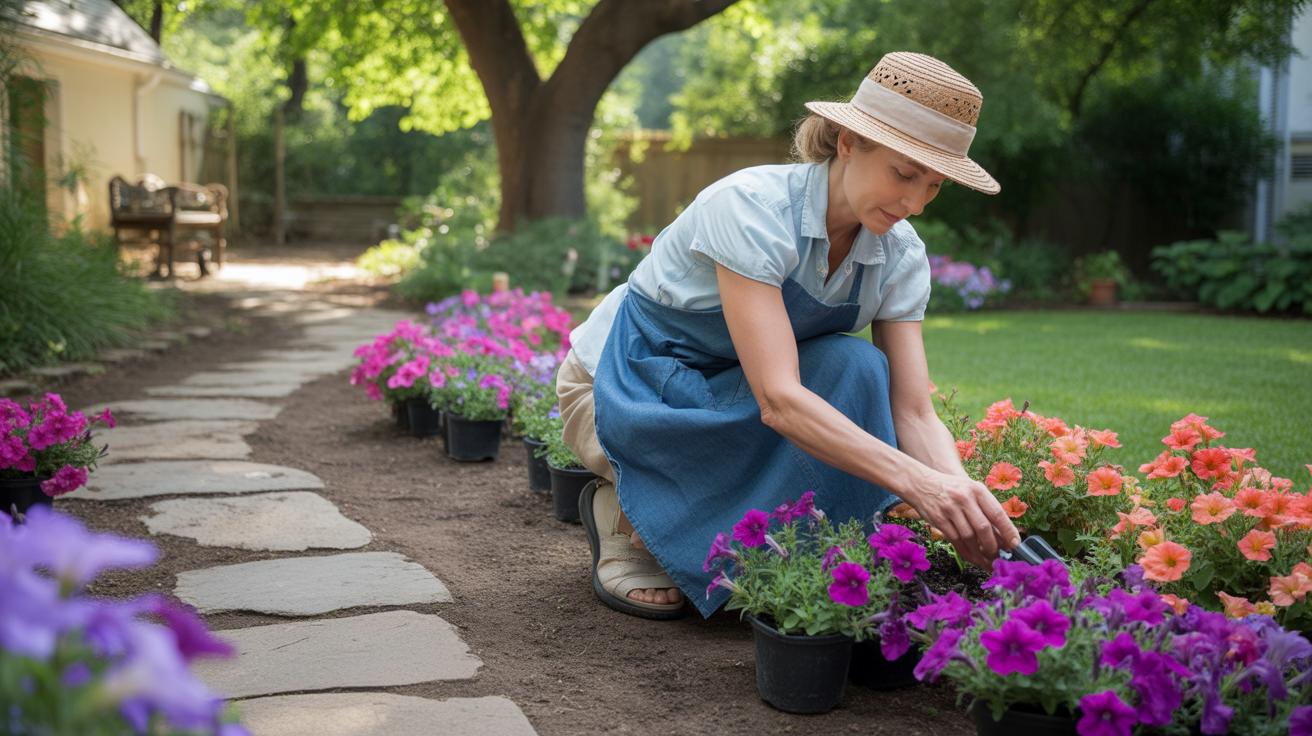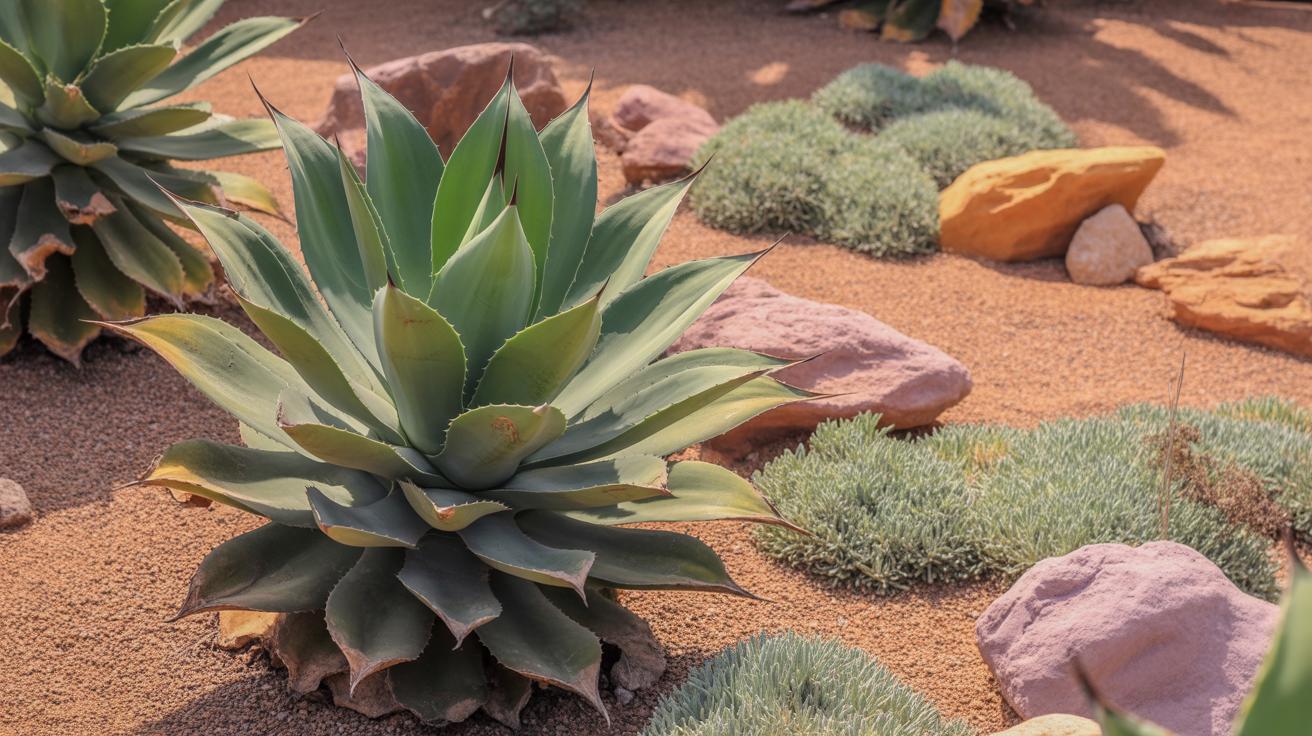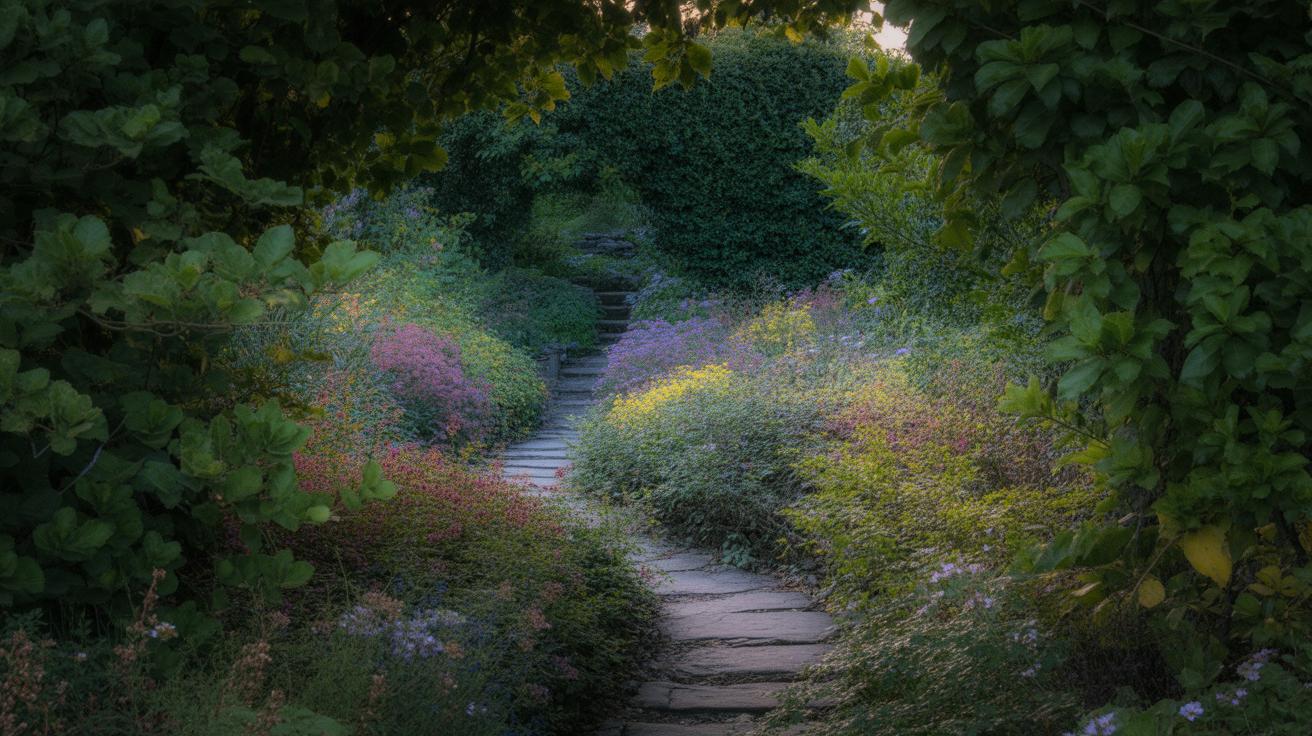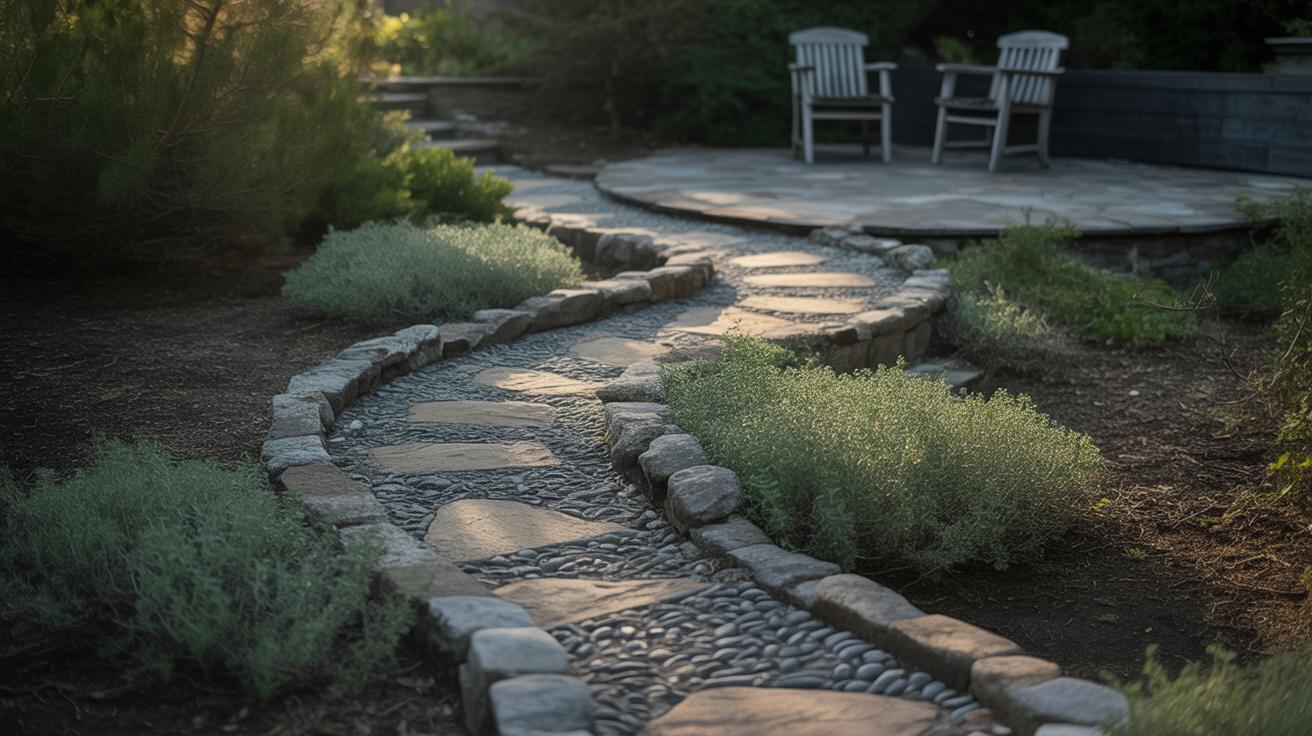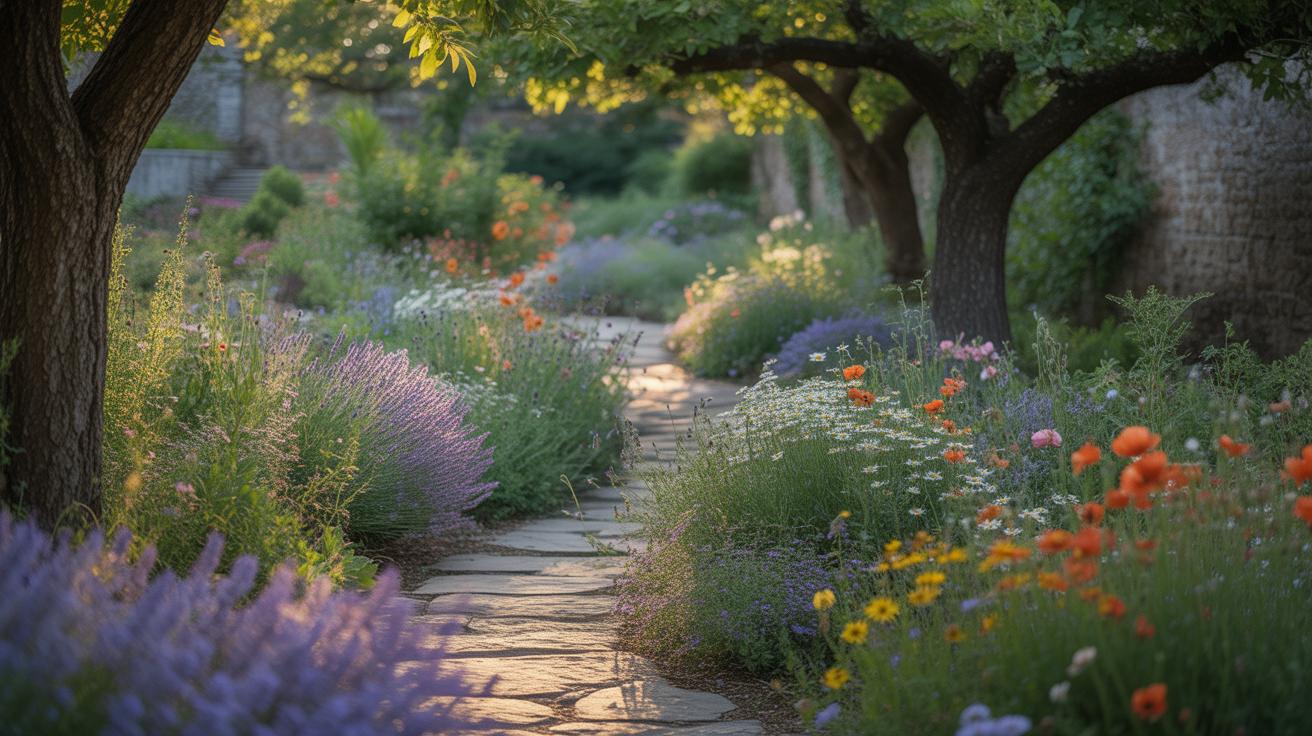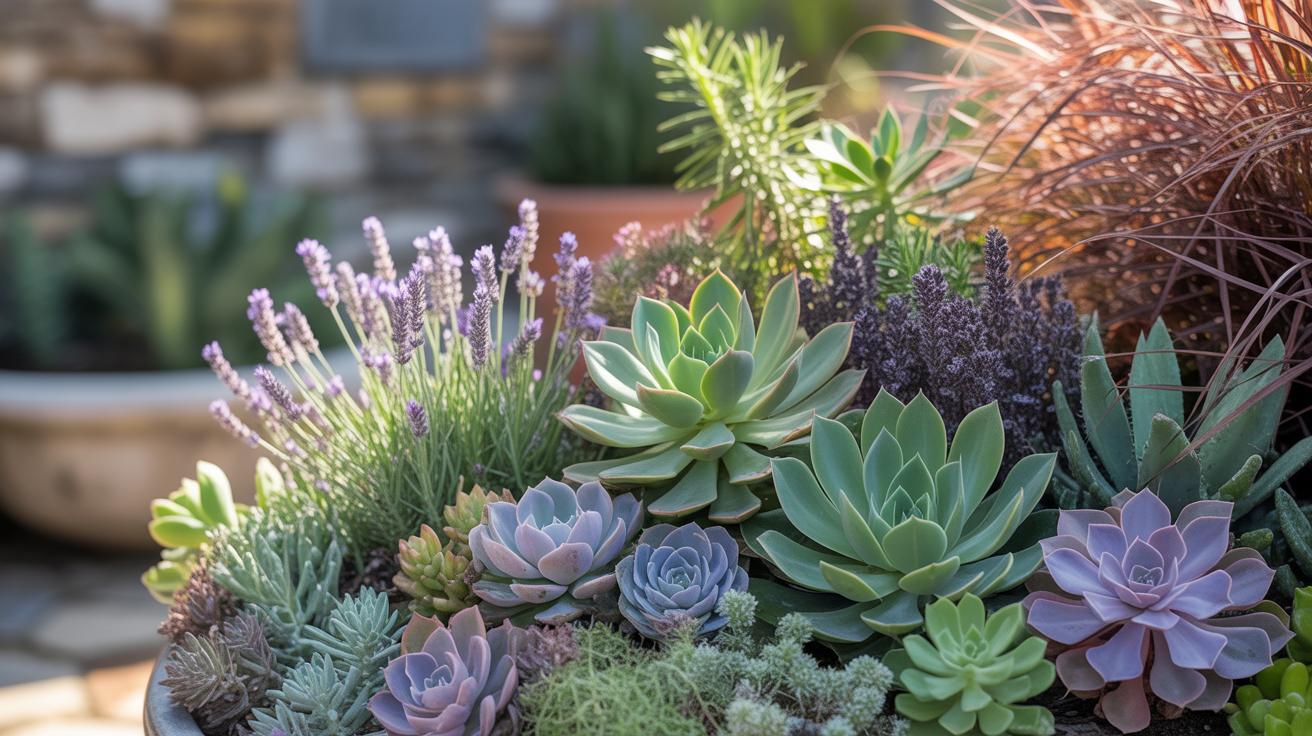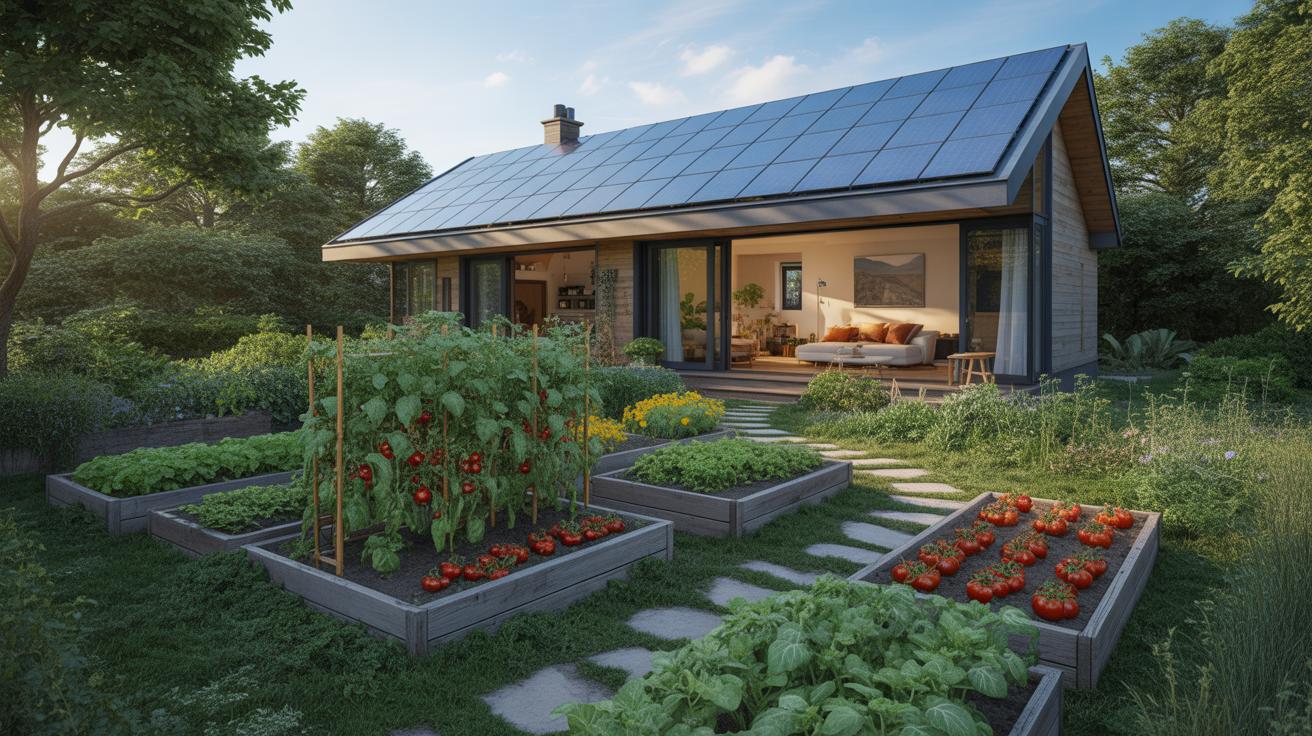Introduction
Rain gardens help manage rainwater and protect the environment. They collect rain runoff from roofs, driveways, and other hard surfaces. This water then soaks into the soil instead of flowing into storm drains. This process improves water quality and reduces flooding. Rain gardens also add beauty to your home and create habitats for wildlife.
You will learn how rain gardens work and why they matter. This article explores their role in water management and environmental health. It explains how rain gardens can improve your property and contribute to a greener planet.
Rain Garden Basics
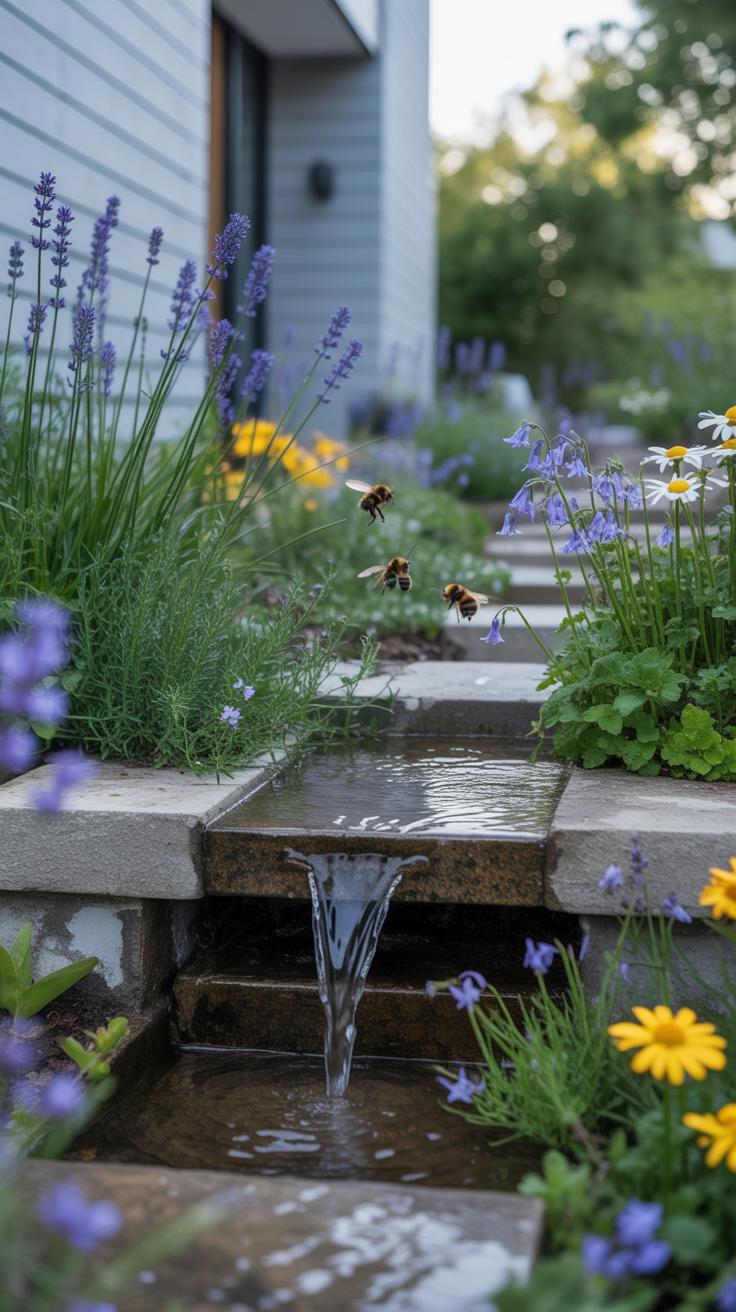
What is a Rain Garden
A rain garden is a small, shallow area in your yard that is planted with special flowers, grasses, and shrubs. Its job is to catch rainwater that falls on your roof, driveway, or other hard surfaces. Instead of the water running off quickly and disappearing, the rain garden lets it soak slowly into the ground.
Think of it like a natural bowl where water gathers for a little while. This helps the water go back into the earth instead of flooding streets or carrying dirt and trash to streams. People create rain gardens to keep their homes safer and the environment cleaner.
How Rain Gardens Work
When it rains, water falls on places like roofs and sidewalks. Normally, this water runs off fast and heads straight to drains or streets. But in a rain garden, the water collects and stays for a bit. The ground under the plants is made up of sand, soil, and compost, which helps soak up the water quickly.
While the water sits in the rain garden, the plants and soil work together to filter out yucky stuff like dirt, oils, or chemicals that the rain might pick up along the way. Then, the clean water slowly seeps back into the earth. It’s like a natural washing process, making the water cleaner before it disappears underground. This process also helps keep bugs and puddles away from your yard.
Water Management Benefits
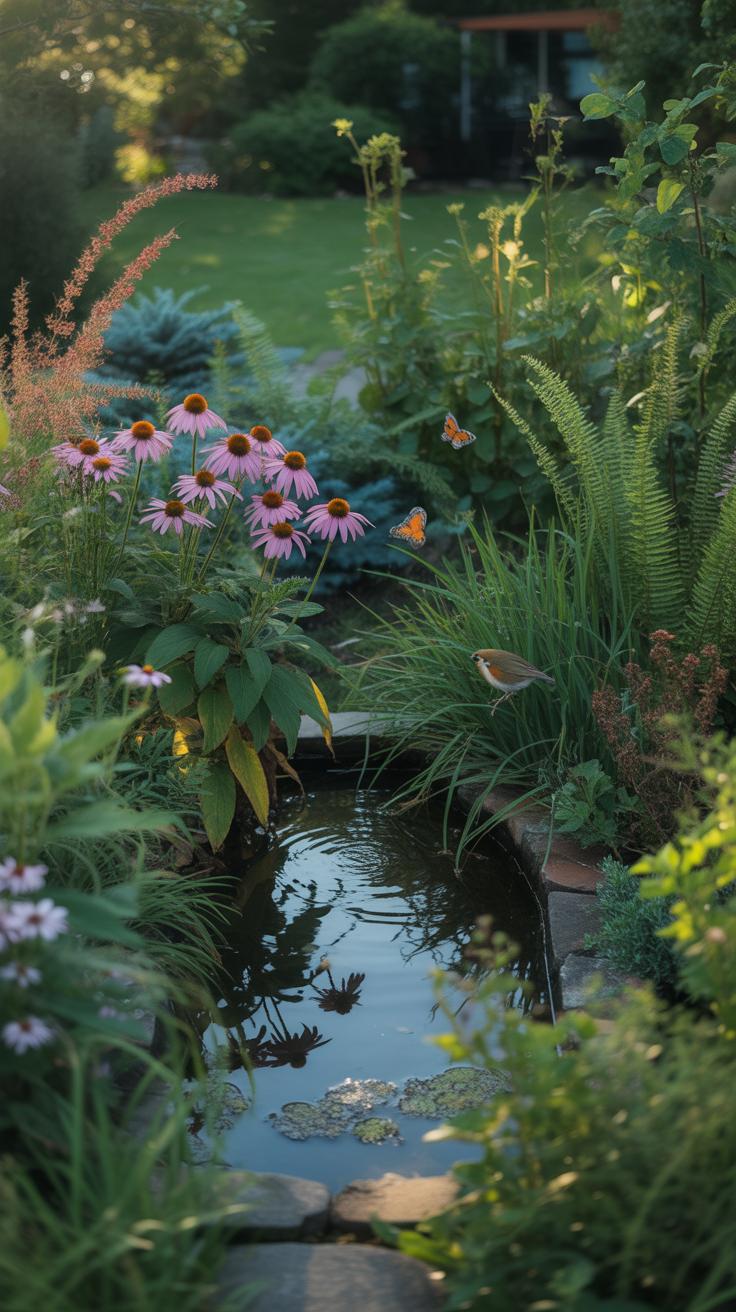
Reducing Runoff
Rain gardens slow down the rush of water that flows off your roof and driveway. Instead of water hurrying over hard surfaces and straight into storm drains, it gently soaks into the ground. This pauses the water and gives it time to settle.
By holding back stormwater, rain gardens cut down on how much water quickly flows into nearby streams or streets. You might not realize it, but less runoff means less erosion and fewer issues with clogged drains after heavy rain.
Consider that rain gardens can soak up hundreds of gallons during a storm. That’s like keeping a small bucket of water from flooding your yard. It feels like taking control, even if you’re just managing a slice of the problem.
Flood Prevention
When storms hit hard, excess water often causes flooding. Rain gardens act like small sponge areas, absorbing that extra rain to stop it from pooling where it shouldn’t. Your yard—and your neighborhood—can handle storms better with this extra buffer.
Think about places where flooding happens often. If more homes had rain gardens, could flood damage go down? It seems likely, though how much depends on the size and placement of the garden.
Rain gardens aren’t a flood fix-all, but they help lower the risk by soaking up water right where it falls. This slows the water’s path, reducing strain on drains and nearby rivers during heavy rains. You might notice puddles disappear faster near a well-placed rain garden.
Water Quality Improvement
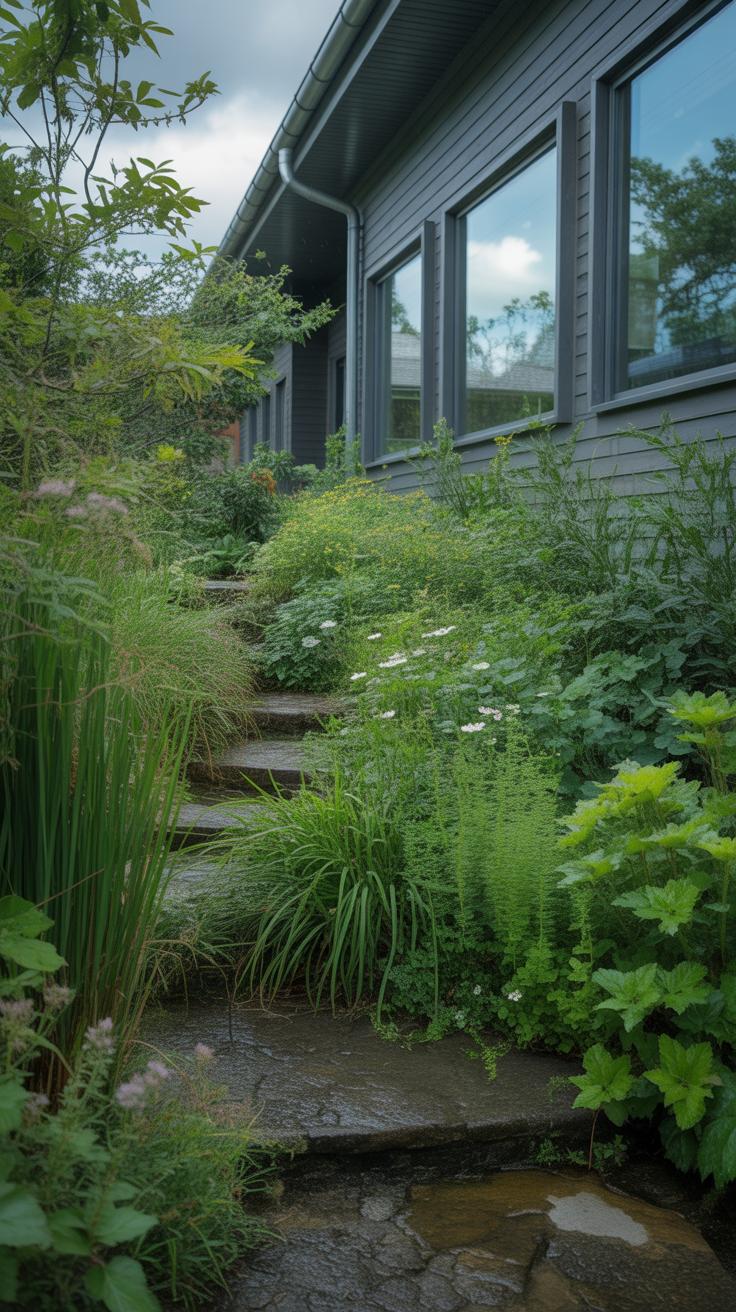
Filtering Pollutants
When rainwater runs off your roof or driveway, it often picks up dirt, oils, fertilizers, and other pollutants along the way. Rain gardens act like a natural filter for this runoff. The plants and soil work together to catch and break down many of these contaminants before the water reaches storm drains or nearby waterways.
The process isn’t instant, and it’s not perfect. But those deep-rooted plants create pathways for water to soak into the soil slowly, allowing microbes to digest harmful substances. You might not see it, but beneath the surface, pollutants are being trapped or transformed into less harmful compounds. I’ve been surprised how just having the right mix of plants can make a difference, even after just one season.
Protecting Water Sources
Think about the lakes, streams, or groundwater near your home. When polluted runoff rushes into them, it affects the animals, plants, and ultimately, us. Rain gardens help lessen this impact by reducing the volume and pollution load of water entering these sources.
Cutting down polluted runoff helps keep water cleaner and supports healthier ecosystems. That matters more than we often realize. It’s not only about stopping debris but also about limiting nutrients like nitrogen and phosphorus that cause issues like algae blooms.
Maybe it sounds like a small thing, but if many people add rain gardens, the cumulative effect could be noticeable. Have you wondered how much difference your little patch of green can make to the bigger water system? It might be more than you think.
Environmental Impact
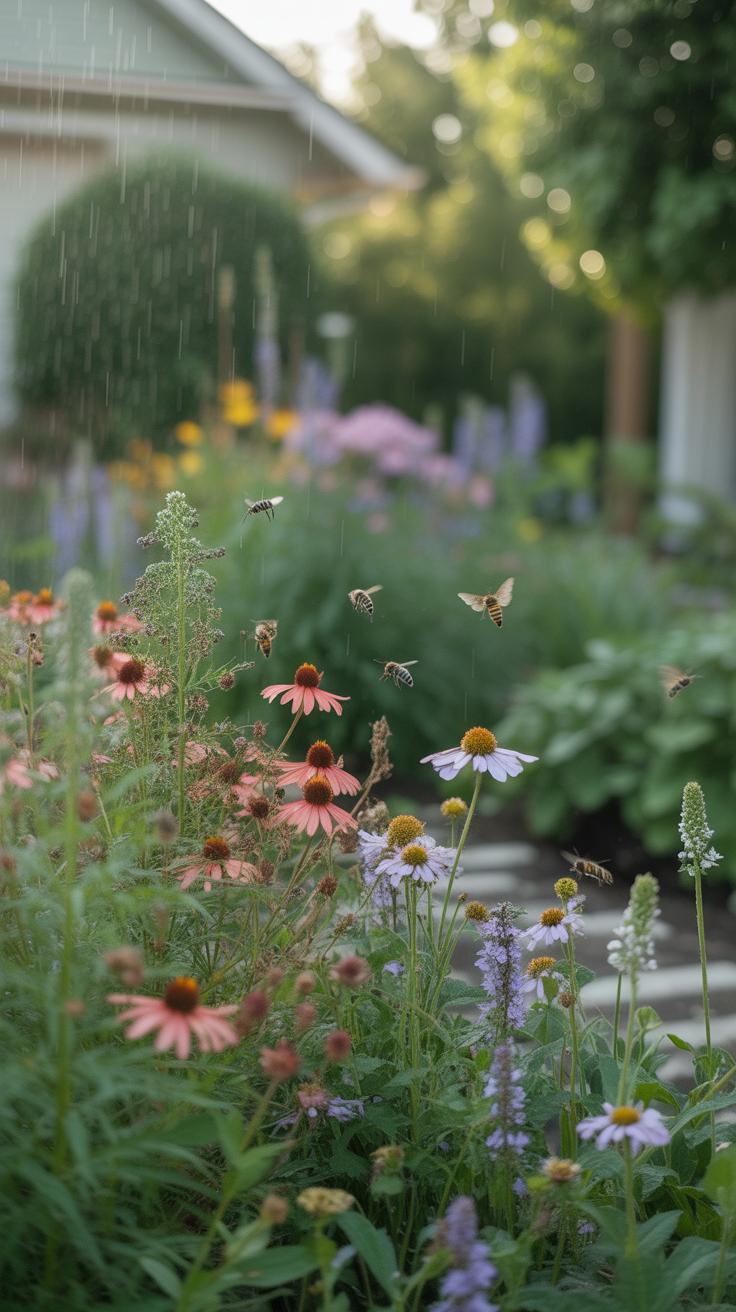
Supporting Wildlife
You might not realize it, but rain gardens do quite a bit for local wildlife. By capturing stormwater and planting native species, these gardens offer a small but meaningful habitat for various creatures. Birds are often drawn to the shelter and food sources they provide—seeds, insects, and nesting spots. Insects, such as bees and butterflies, find nectar-rich flowers, which helps pollinate nearby plants. Even amphibians and small mammals can benefit from the moist environment.
For example, one homeowner I know saw a noticeable increase in hummingbirds visiting after installing a rain garden filled with native shrubs and perennial flowers. You see, rain gardens can become little natural refuges amid urban or suburban yards—places where wildlife can thrive without feeling too exposed or disturbed.
Cooling Urban Areas
Hard surfaces like asphalt and concrete soak up heat and release it slowly, making neighborhoods warmer. Rain gardens interrupt this process. The soil, plants, and water in them help cool the air around you, kind of like a natural air conditioner. Plants transpire water, which pulls heat away from the environment around them. The shade from taller plants also cools the ground beneath.
Some studies even suggest that clustering several rain gardens in a neighborhood can noticeably lower local temperatures during hot days. It’s not a perfect fix for urban heat islands, but every little bit helps. Maybe your garden won’t cool down the whole block, but it might make stepping outside a bit more comfortable for you and your neighbors.
Designing Your Rain Garden
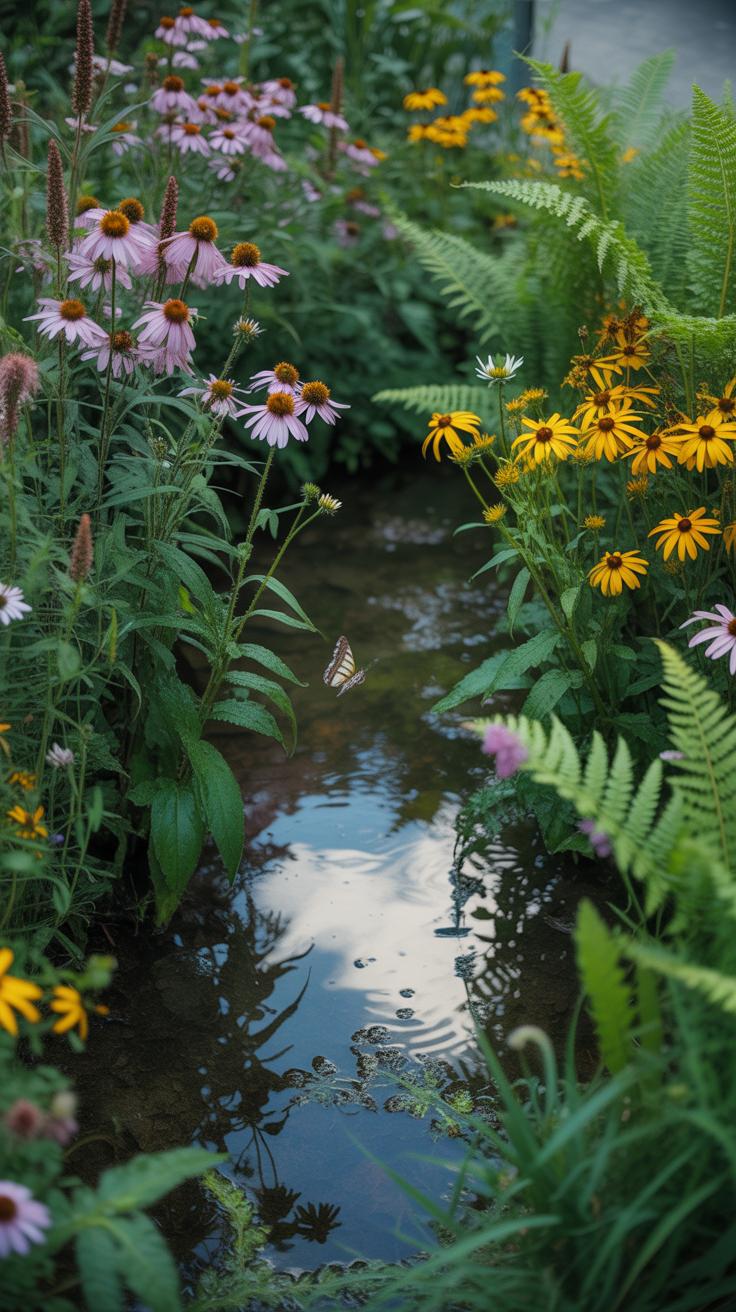
Choosing the Location
Finding the right spot for your rain garden means paying close attention to where water naturally flows around your home. Look for low-lying areas or places where rainwater tends to pool after a storm. Near downspouts, driveways, or patios often works well, since these areas receive runoff that your garden can absorb.
Still, watch out for spots too close to your foundation or septic system—water sitting there might cause issues rather than help. You might want to test how quickly the soil drains by digging a small hole and filling it with water. If it takes more than a day or so to drain, you may need to adjust your location or improve the soil first. It’s a bit of trial and error, honestly.
Picking Plants and Materials
Choosing plants for a rain garden isn’t just about looks. These plants need to handle both wet and dry conditions, which can be tricky. Think native grasses, sedges, or wildflowers—these usually adapt well without much fuss. I once planted blue flag iris and found it handled sudden water surges pretty well but still survived drier spells.
The soil is key, too. Mixing in sand or compost can improve drainage and help prevent pooling. Your goal is soil that soaks up water quickly but doesn’t stay soggy. Gravel or mulch scattered around plants also helps by slowing runoff and reducing erosion. Remember, a rain garden isn’t a pond, so the water should soak in within a day or two.
Maintaining Your Rain Garden
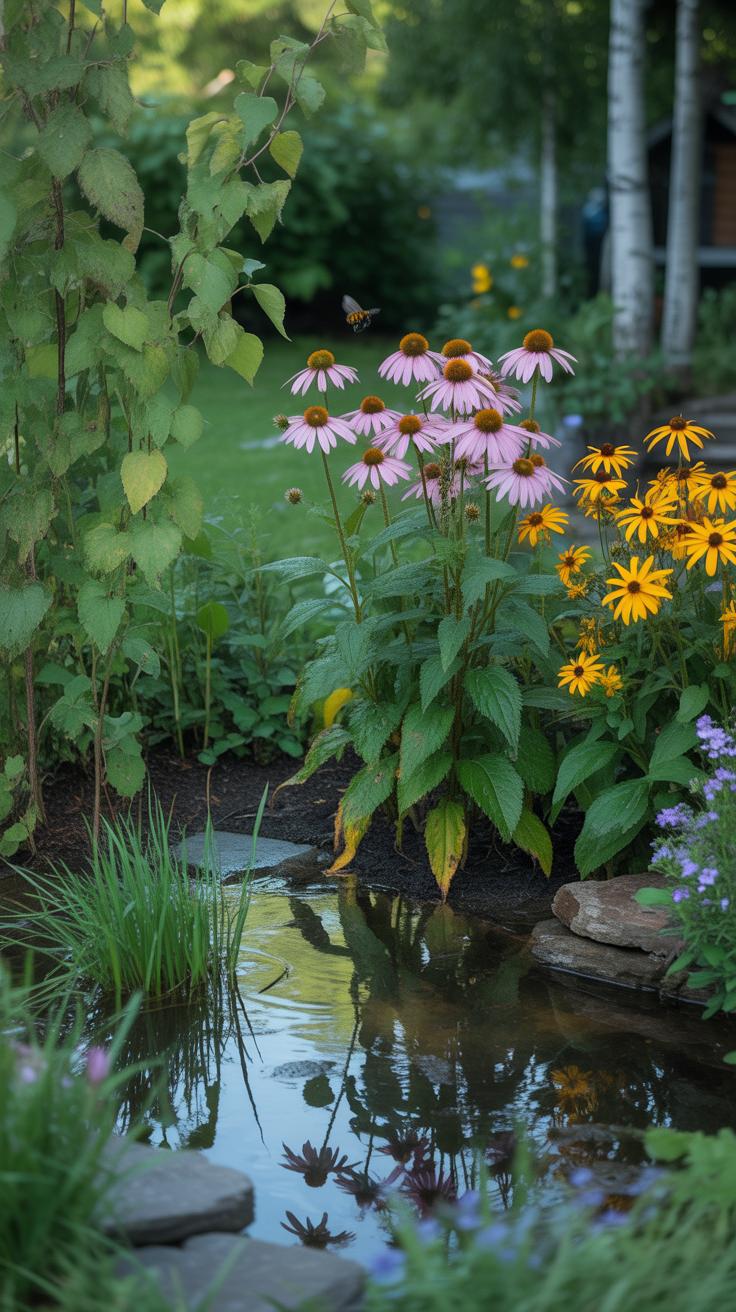
Water and Weeding
When you first plant your rain garden, watering matters more than you might expect. Those young plants need some extra care to settle in, especially during dry spells. Try to water deeply but not too often—maybe once or twice a week if rain is scarce. Overwatering can be just as harmful as underwatering, so keep an eye on the soil moisture. As the garden matures, its need for watering usually drops. You might even forget about it for stretches during rainy seasons.
Weeding, though, demands more attention. Weeds compete with your plants for nutrients and space, making your garden less effective at soaking up water. Pulling them by hand works best because it avoids disturbing the soil too much. Mulching can help cut down on weeds, but don’t expect it to solve the problem completely. Weeds will find their way back; it’s just a part of the process.
Seasonal Care
Taking care of your rain garden changes with the seasons. In spring, focus on removing any debris and cutting back dead stems—this clears the way for fresh growth. Late summer sometimes calls for another round of weeding, as fast-growing plants can take advantage of the warm weather.
Fall is an opportunity to add a light mulch layer to protect plant roots from freezing temperatures. Yet, leaving some seed heads intact might invite birds or help native plants reseed naturally. Then winter arrives, and your garden rests, but keep an eye out for any erosion or pooling water that suggests adjustments might be needed.
Have you noticed how your rain garden shifts subtly with the seasons? Sometimes you might feel like it’s barely there, then suddenly it bursts to life. Maintaining it is less about strict schedules and more about tuning in—observing, adjusting, and letting it adapt in its own rhythm.
Cost and Benefits
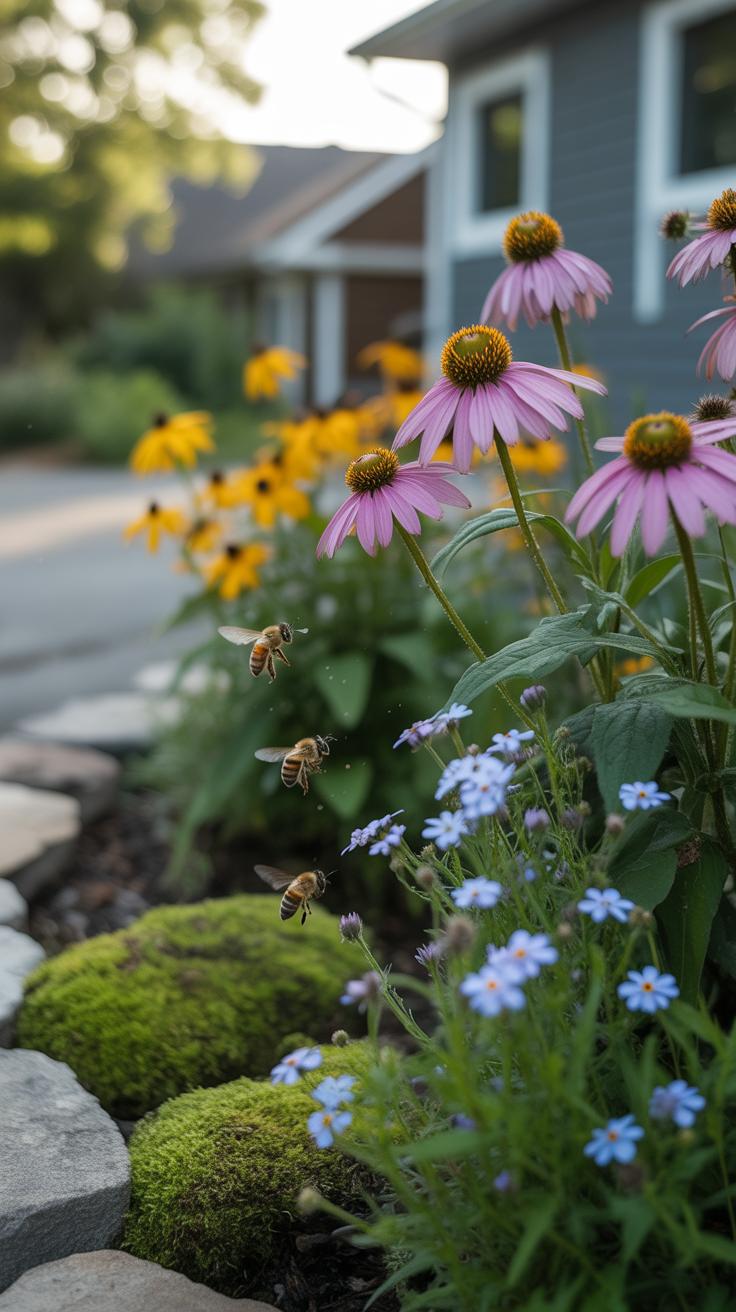
Installation Costs
Building a rain garden isn’t free, and the cost often depends on size and materials. For a small rain garden, you might spend between $300 and $1,000. That covers soil amendments, plants, mulch, and maybe some gravel or edging materials. If you hire help, labor can add a few hundred dollars to the bill. Doing it yourself cuts costs, but takes time and effort.
Sometimes people underestimate how much work goes into preparing the site and choosing the plants. You’ll want plants suited to your local climate and soil, which can require some research or advice from a nursery. But overall, it’s a manageable project that doesn’t usually break the bank.
Long Term Savings
One thing that might surprise you is how a rain garden can save money over time. By absorbing and filtering stormwater, it can reduce the amount of runoff entering storm drains. That means less risk of flooding around your home — and fewer costly repairs to your foundation or basement.
Plus, rain gardens can help lower your water bills. That’s because they reclaim rainwater that otherwise might be wasted. When plants take up water, your garden and yard need less supplemental watering during dry spells. It’s not a huge amount, but over years, those savings add up.
So while you might hesitate at the upfront cost, the way a rain garden protects your property and reduces water use could make it a smart investment. It’s a mix of tangible savings and a bit of peace of mind that many find worthwhile.
Rain Gardens and Community
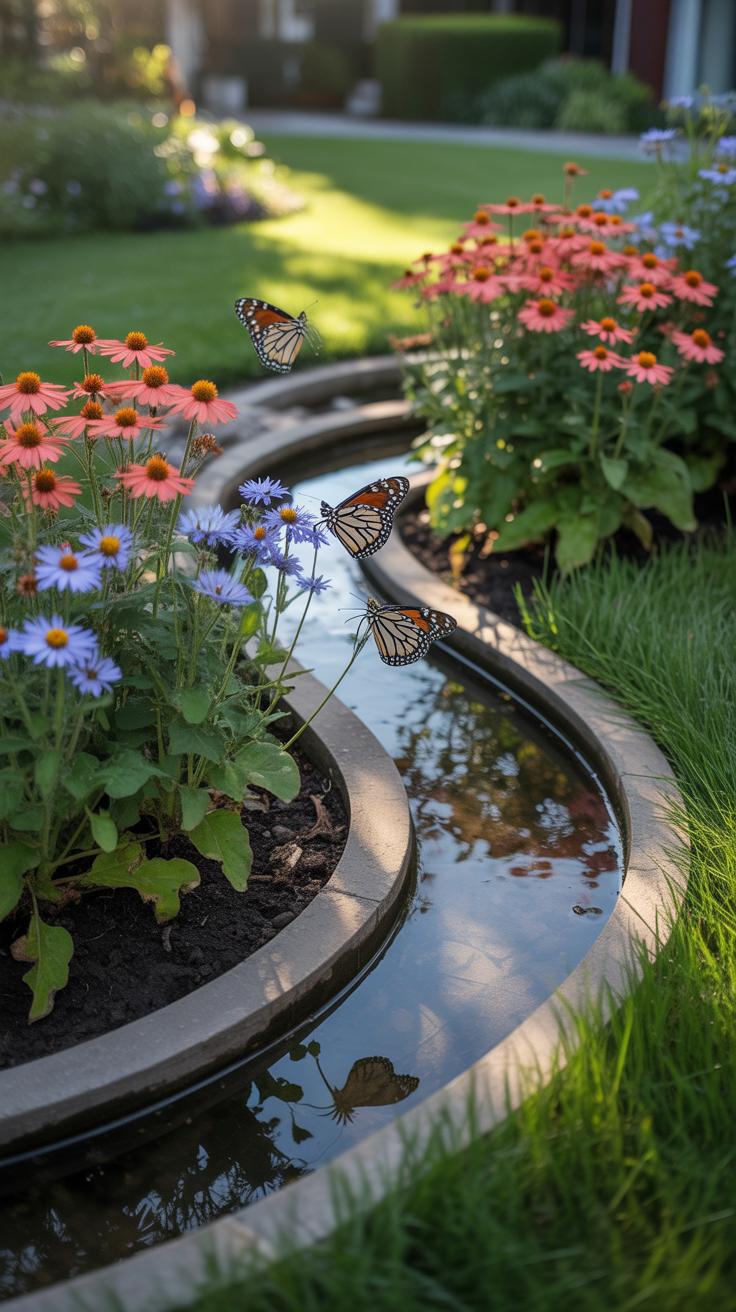
Neighborhood Benefits
Rain gardens do more than manage water—they quietly shape the character of neighborhoods. When you add a rain garden, you reduce runoff, which means less flooding on streets and in basements. That in itself can make a neighborhood feel safer and more stable. Plus, the plants in these gardens attract birds and pollinators, creating little pockets of wildlife that neighbors can notice and enjoy.
Many homeowners notice that well-kept rain gardens boost curb appeal, making properties more attractive. This sometimes nudges property values upward, though that doesn’t happen overnight. It’s the subtle, ongoing effect of a greener, cleaner environment that builds over time. That improved environment encourages people to take better care of their yards and, by extension, the whole block.
Encouraging Others
Getting others interested in rain gardens often starts with simple conversations—sharing your own experience, for example. People respond well to stories about practical benefits, like how a rain garden stopped backyard flooding or attracted colorful butterflies. Hosting a garden tour or inviting neighbors to help plant can turn curiosity into action.
Sharing resources—the basic how-tos, plant lists, or budget tips—also lowers the barrier for those who might find the idea daunting. Sometimes small incentives, like community contests or local grants, provide just enough motivation. You might wonder if your effort really sparks change. It often takes time and patience, but once a few rain gardens take root, others tend to follow. Isn’t community progress always a little slower than we expect?
Conclusions
Rain gardens provide many practical benefits. They reduce flooding by slowing rainwater runoff. They filter pollutants from water before it reaches rivers and lakes. This helps keep local water clean. Rain gardens also create green spaces that support wildlife and improve air quality.
Adding a rain garden to your property is a simple step to protect the environment. It saves water by allowing rain to soak into the ground. Rain gardens connect your home to nature and help balance urban water challenges. Think about how a rain garden can improve your home and the world around you.


